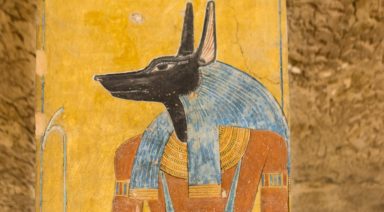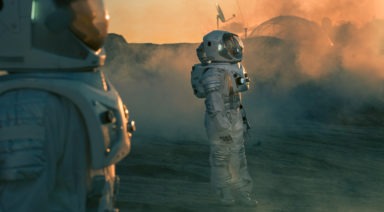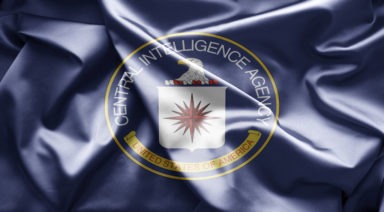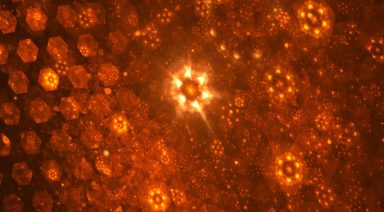Scientists Find Evidence of Water on the Moon, Here on Earth

Scientists found more evidence for the existence of water on the moon in a lunar meteorite found here on Earth. The discovery came in the form of moganite, a mineral similar to quartz that requires water to form.
Though there are hundreds of lunar meteorites on our planet, this is the first time researchers found the presence of moganite, an oxide mineral. Of the roughly 350 lunar meteorites discovered on Earth, the majority have been discovered in the Sahara and Antarctica.
Scientists originally believed water could exist on the moon in the form of ice trapped in its shadowy craters, though this theory was mostly conjecture. That was until 2008, when the Chandrayaan-1 probe discovered water vapor in the moon’s atmosphere. Since then, NASA’s Lunar Reconnaissance Orbiter has measured hydrogen on the moon’s surface, strongly suggesting the presence of water.
But it turns out this entire time, all the evidence we needed was here on Earth. And it’s the first sign of water in the subsurface of the moon at mid and lower latitudes.
A recent experiment by scientists at Brown University showed that melted rocks from asteroid impacts are capable of depositing large amounts of water on a planet or satellite. This discovery showed that its possible water on earth may have been deposited by such an impact. And researchers believe H2O may have arrived on the moon in the same way.
If true, this means there is a greater likelihood that a number of planets out there gained water, and subsequently life, through a this type of impact deposit. Though not all scientists agree, with some saying an impact that significant would actually eliminate any chance of water.
But if the theory is correct, it would posit that liquid water temporarily existed on the lunar surface, before it cooled below ground, remaining there and forming moganite in a process called brecciation.
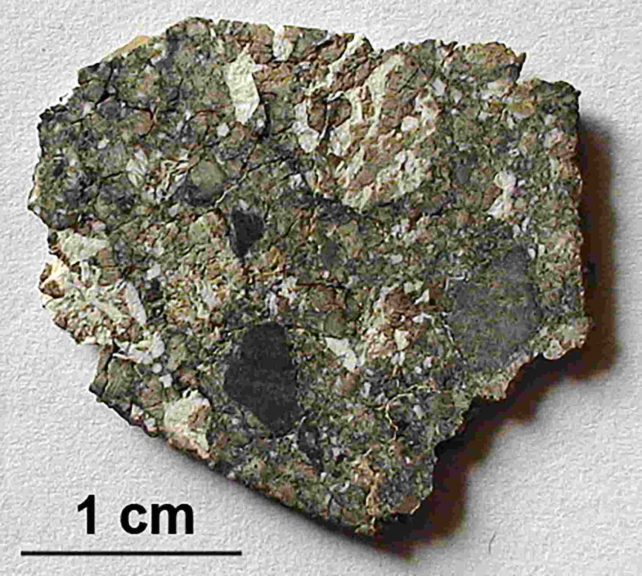
Eventually, another comet impact hit the moon hard enough to blast some of that moganite with escape velocity, sending it out of the moon’s gravitational pull and toward Earth.
Because the moganite-rich meteorite was found in the arid climate of the Sahara, it rules out the possibility that brecciation could have happened on Earth from terrestrial weathering.
The find is promising for future colonization of the moon as a launch point for further space exploration. Water would not only provide a drinking supply for lunar inhabitants, but would offer a key component for making rocket fuel. Estimates put the amount of water contained in lunar soil as high as 0.6 percent, allowing for 1.6 gallons per 36 cubic feet.
Earth’s relationship with the moon is intrinsic to many planetary functions, though we’re not quite sure how it got there. Compared to other planets’ moons ours is massive, and it’s even possible life may not have formed on Earth at all without it in such close proximity.
Despite the numerous trips to the moon’s surface during the Apollo missions, its clear there is still a lot to learn about our lunar counterpart. With such a significant discovery found here on Earth, maybe its time to take another look at the samples brought back from the Apollo missions. Unless they too are just pieces of petrified wood.
Ben Rich, Lockheed Martin and UFOs

Ben R. Rich, brilliant scientist, aeronautical engineer and Father of Stealth is more of an enigma now than he was during his lifetime. He is most noted for designing a stealth fighter-plane that flew undetected by radar and for his role as the second director of Lockheed Martin’s top-secret Skunk Works program. Born in 1925, Rich passed away in 1995 with controversy still brewing among his friends, critics and those who heard him speak publicly about whether or not he believed in UFOs and extraterrestrials.
Many questions remain unanswered. Was there a Ben Rich deathbed confession where he admitted that he knew that extraterrestrials and UFO visitors are real? Did he publicly mean it when he claimed that, “We now have the technology to take ET home,” or was it a joke? Is there credibility to other statements attributed to him in which he allegedly claimed technology learned at Roswell was used to influence the development of top secret U.S. aircraft? Are the alleged communications from Rich to his friend John Andrews credible?
With Rich’s last breath, definitive answers to these questions were lost forever.
Ben Rich and Skunk Works
Lockheed Martin’s Advanced Development Projects (ADP), known officially as Skunk Works, was a secret aeronautical research facility in Burbank, California. The founder and first director of Skunk Works was Clarence “Kelly” Johnson, who was the designer of a U.S. spy plane called the U-2. Ben Robert Rich joined Skunk Works in 1954 and helped design various aircraft, including a prototype that could reach speeds more than 1,300 mph. He became the second director of Skunk Works, holding that position from 1975 until his retirement in 1991.











